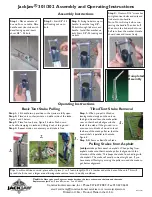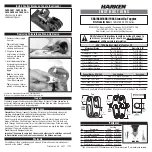
Spectrum Analysis
R&S
®
Scope Rider RTH
111
User Manual 1326.1578.02 ─ 12
Frequency Span
Determines how many values are analyzed by a single FFT (sample frequency), and
thus the frequency resolution. The larger the value, the higher the resolution, but the
longer the required analysis time.
Note:
Due to the longer analysis time, changes to the measurement settings may only
become visible with a time delay.
Furthermore, the frequency span determines the visible range in the spectrum dia-
gram. Depending on the selected frequency span, the time scale may be restricted
(see
"Narrow"
8k values analyzed per FFT; time scale
≥
100 ms/div
"Max"
64k values analyzed per FFT; time scale
≥
1
μ
s/div
Remote command:
SPECtrum:FREQuency:SPAN[:VALue]
SPECtrum:FREQuency:BANDwidth[:RESolution][:VALue]
Window type
Windowing helps minimize the discontinuities at the end of the measured signal inter-
val and thus reduces the effect of spectral leakage, increasing the frequency resolu-
tion.
Various different window functions are provided in the R&S
RTH to suit different input
signals. Each of the window functions has specific characteristics, including some
advantages and some trade-offs. Consider these characteristics carefully to find the
optimum solution for the measurement task.
Table 6-1: Window type characteristics
Window type
Frequency
resolution
Magnitude
resolution
Measurement recommendation
Rectangular
Best
Worst
Separation of two tones with almost equal amplitudes
and a small frequency distance
Hamming
Hann
Good
Poor
Frequency response measurements, sine waves, peri-
odic signals and narrow-band noise
Flat-Top
Poor
Best
Accurate single-tone measurements
Blackman
Worst
Best
Mainly for signals with single frequencies to detect har-
monics
Accurate single-tone measurements
Remote command:
SPECtrum:FREQuency:WINDow:TYPE
SPECtrum:FREQuency:WINDow:FACTor?
FFT Mode
















































